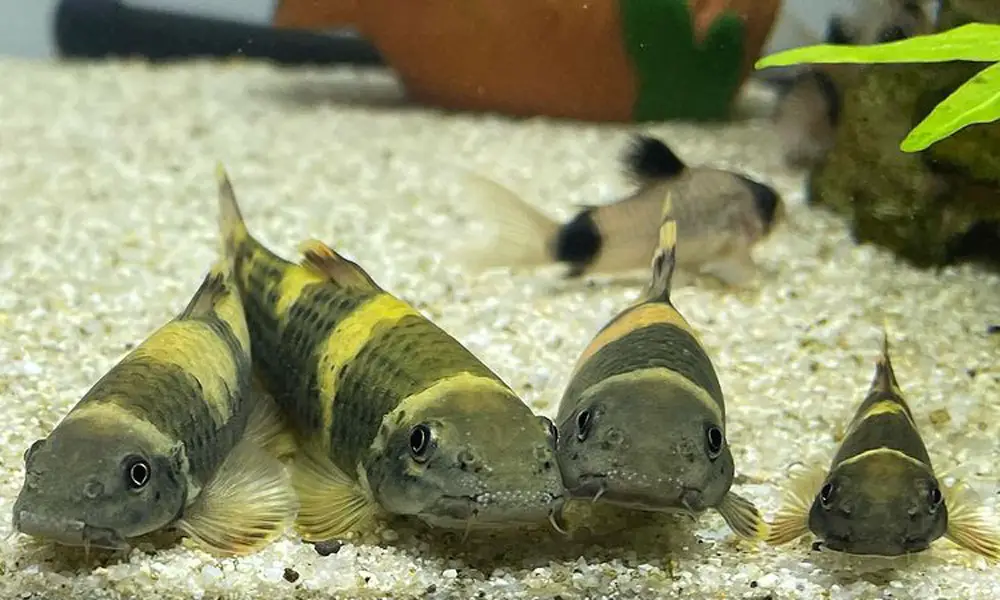Loaches, the most diverse family of freshwater bottom dwellers, are known for their unique bodies and playful personality. Most of them are social fish and prefer to be kept in groups. For many species, loneliness hurts and will make them pine away.
As you might know, there are 1249 species of loaches. From the diminutive Mini Dragon Loach (Schistura pridii) to the giant Imperial Flower Loach (Leptobotia elongata), they come in a wide variety of sizes – the smallest loaches only grow to about an inch in length, while the largest can reach two feet or more.
So you’re thinking about getting small loaches for your tank, but you’re not sure what kinds to choose? Never fear— here’s a list of our favorite small loaches available in the hobby today.
Whether you’re looking for something active and playful, or something more mellow and subdued, there’s sure to be a perfect small loach for your tank!
So, without further ado, let’s get started!
Kuhli Loach (Pangio kuhlii) – 4″ (10 cm)
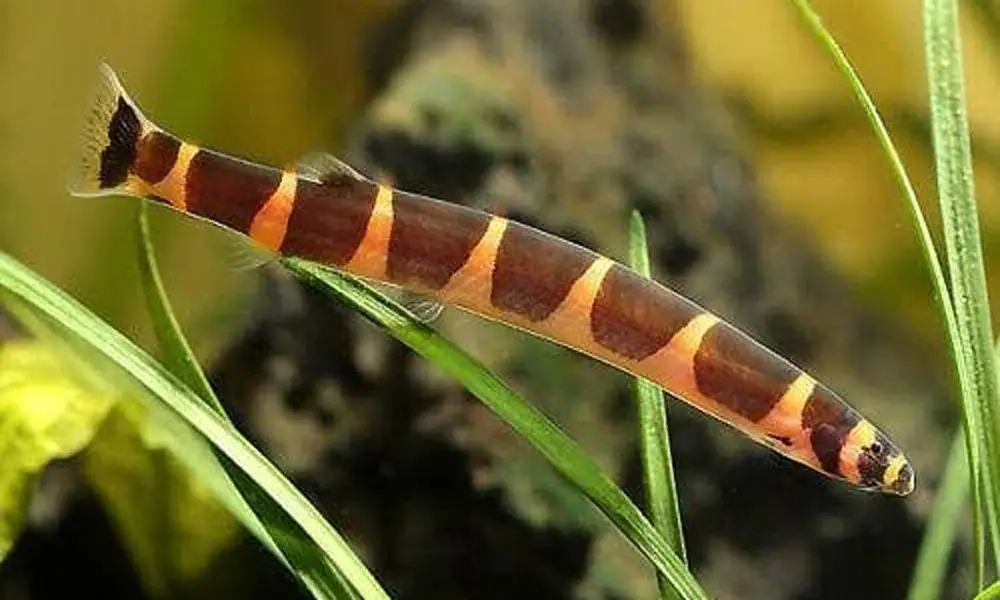
The Kuhli Loach, also known as the Coolie Loach and Leopard Loach, is a small, eellike fish that reaches a maximum length of four inches. It’s a popular choice for aquariums because of its attractive striped pattern and fascinating burrowing habits.
These fish are native to the streams in Southeast Asia. Several subspecies are available in the aquarium trade, but they all require the same basic care.
Kuhli Loaches are most active at night while hiding in dark places during the day, so they should be fed at night. In the home aquariums, you will notice they often burrow into the bottom and sift for things to eat.
Fairly peaceful by nature, Kuhli Loaches do best in groups of six or more fish. They can be kept with other small, non-aggressive fish, such as tetras, danios, rasboras, and other bottom dwellers.
Blackline Loach (Yasuhikotakia nigrolineata) – 4″ (10 cm)
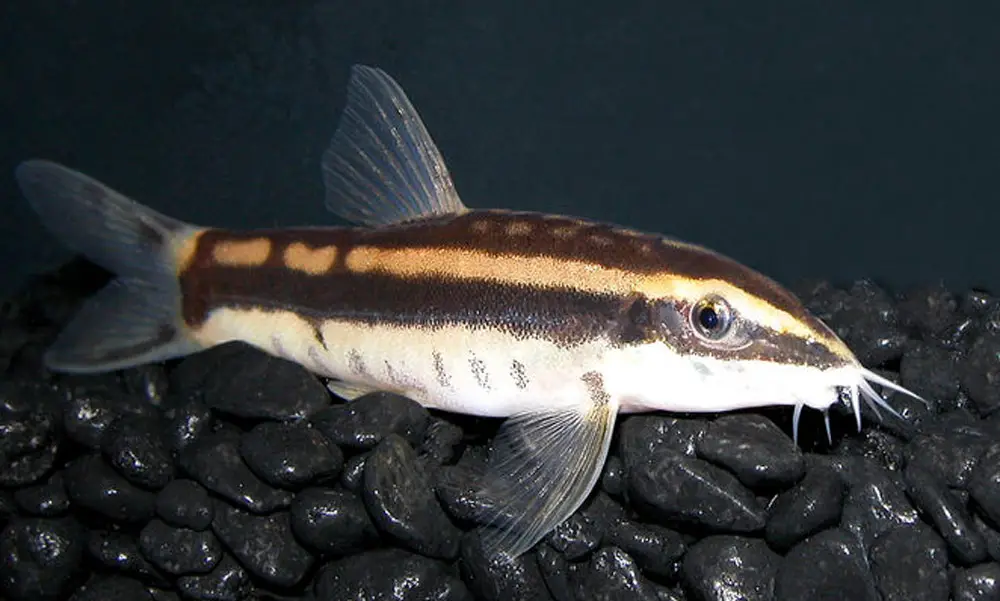
This is a vulnerable species of loach found in the Mekong basin in Southeast Asia, which often inhabit creek with a sandy bottom and moderate current.
This small fish can only grow up to 4 inches (10 cm) in length. They get their name from the two black lines on the body. One runs along their body from snout to tail, and another close to the top of its back.
The Blackline Loach is a shoaling and shy fish, so it’s best to keep them in groups of 5 or more. Also, they are handy fish as long as you provide a finely tuned environment.
These fish are not recommended for beginners simply because their tiny scales make them particularly vulnerable to disease and very sensitive to the medications to treat any bacterial, fungal, or parasitic infections in your tank.
Eel Loach (Pangio anguillaris) – 4″ (10 cm)
One of the smaller members of the Pangio family, P. anguillaris, is commonly found in still and clam areas of the medium to large-sized rivers in Indochina, Malay Peninsula, Sumatra, and Borneo.
In their natural habits, they spend most of their time buried in the sand or silt substrates in debris and decaying vegetation. They are known as very active burrowers in the aquarium, so a suitable soft substrate is a must.
Pangio anguillaris are different from other loaches in having long and slender bodies. Its scientific name, Pangio anguillaris, is derived from the Latin word anguillaris, meaning eel-like, referring to an elongate body.
Zebra Loach (Botia striata) 3.5″ (9 cm)
This is my all-time favorite loach owing to its unique pattern. The Zebra Loach (Botia striata) is native to the clear mountain rivers and streams of Maharashtra and the Western Ghats in India.
It’s worth noting that many fish stores often mislabel them with their much larger cousin, “Clown Loaches” (Botia macracantha), which are around 12 inches when fully grown.
The Zebra Loach sports a brown body with yellow and black stripes that run horizontally along its flanks. These beautiful fish can grow up to 3.5 inches (9 cm) in length. Its relatively small size and peaceful nature make it a perfect candidate for community tanks.
Skunk Loach (Yasuhikotakia morleti) 3.3″ (8.3 cm)
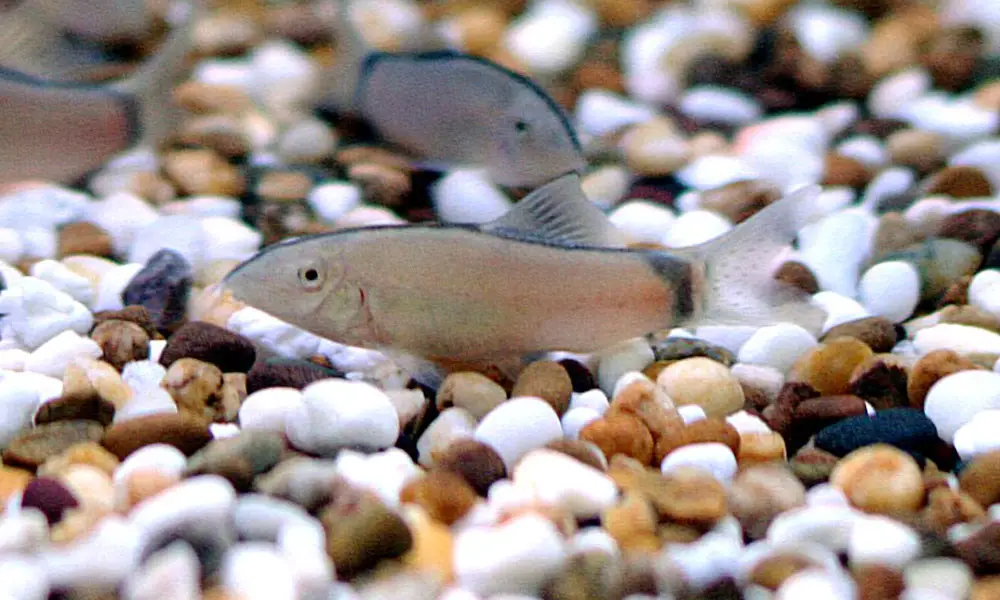
Sometimes called a skunk botia or Hora’s loach, the Skunk Loach (Yasuhikotakia morleti) is a unique and small botiid loach that hails from freshwater streams in Cambodia, Laos, and Thailand.
Like other Botia loaches, these fish are quite pretty and can be easily distinguished by the four pairs of barbels around their mouths. They have a creamy tan to the brown base with a black line that runs from the nose to the base of the tail along the back, which gives its common name, skunk botia.
Skunk loaches hide during the day and become active only at night, foraging for food. Though they stay small, this is actually a very feisty loach and can get aggressive towards each other if there are not enough hiding places, which may not be suitable for community aquariums.
Java Loach (Pangio oblonga) – 3″ (8 cm)
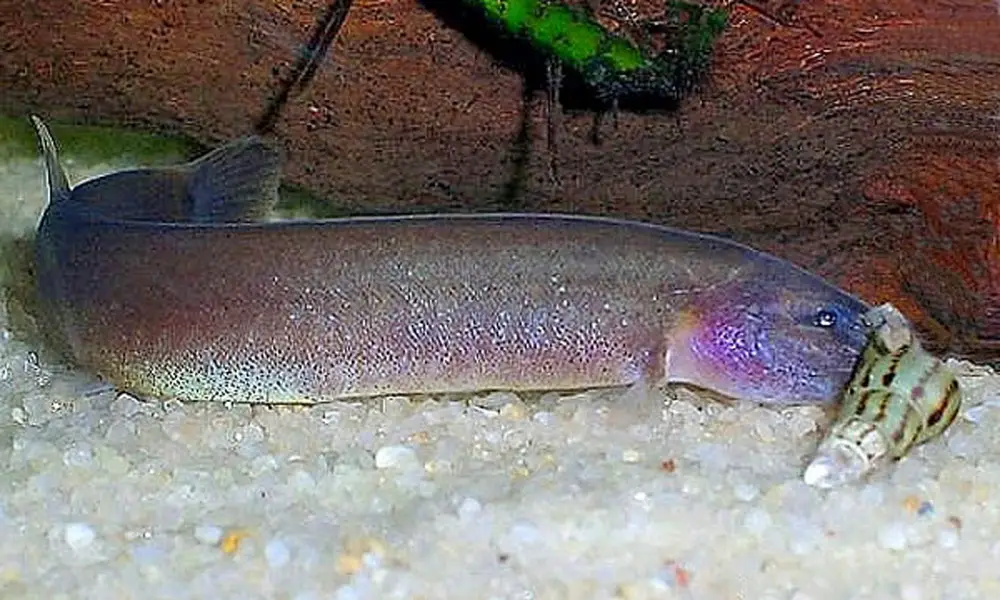
The Java Loach or Black Kuhli Loach is a perfect alternative if you like the swimming pattern of Kuhlis but want a fish with a bit more streamlined appearance. It is sometimes referred to as chocolate Kohli and cinnamon loach in the fish stores.
Like all Pangio species, java loaches have a long-bodied shape with small eyes set high in the skull, but the body of the java loach is slender and is uniform in color, ranging from a reddish-brown to chocolate brown to near black on its body and head, while slightly lighter on the underside.
Like many other loach species, these fish often don’t breed in captivity without certain hormones and must be kept in large groups of five or more.
Reticulated Hillstream Loach (Sewellia lineolata) – 2.5″ (6.35 cm)
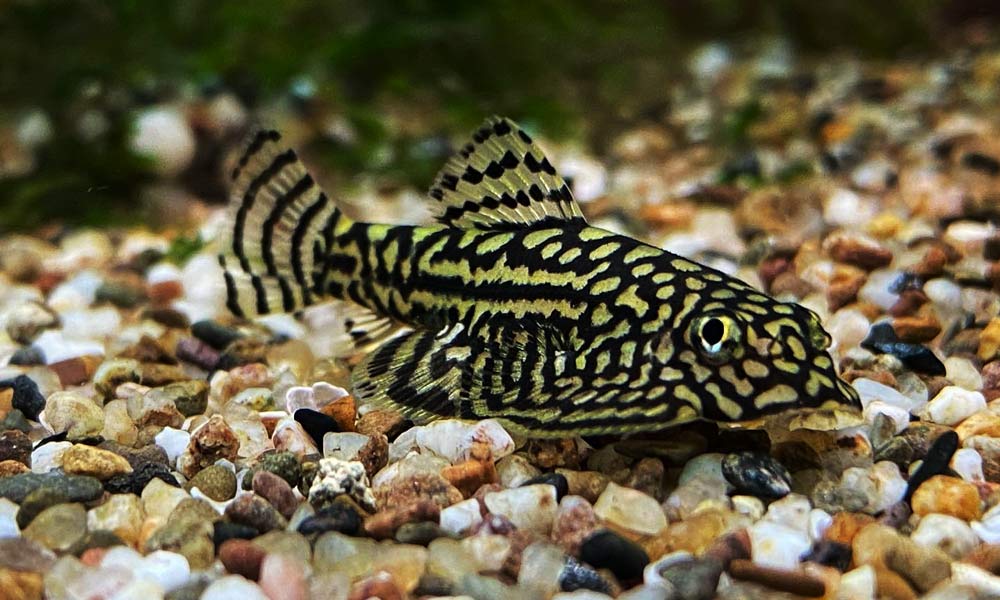
Looking for a small loach that eats algae? The Reticulated Hillstream Loach (Sewellia lineolata) is considered one of the best algae eaters for aquariums, particularly for cold freshwater aquariums.
Besides that, Reticulated Hillstream Loaches are one of the coolest fish in the aquarium hobby. They have an unusual, streamlined body shape covered with intricate patterns, including their fins, which give them a reticulated or net-like appearance.
These fish are native to Vietnam and can be found in fast-moving, highly oxygenated hillstream composed of gravel, bedrock, and sand. These little fighters stay small and only grow to a maximum size of 2.5 inches (6.35 cm).
They are quite hardy and do require some special care. If you’re interested in keeping this loach, check out our care guide.
Dwarf Chain Loach (Ambastaia sidthimunki) 2″ (5 cm)

The biggest challenge when it comes to keeping loaches is their boisterous and often destructive nature when kept in groups that may stress out other timid fish in the aquarium, especially in nano tanks.
Dwarf Chain Loach (Ambastaia sidthimunki), however, is an exception. This fish is indigenous to rivers in Thailand, and it’s one of the smallest loaches that only grow up to 2 inches and make excellent community tank mates.
They have a pretty appearance and inquisitive personality, so they may sniff new fish and explore their tank mates, but they are more chill than other loaches. Unlike other loaches, these loveable pygmy loaches are energetic and active during the daytime.
What attracted fish keepers the most is dwarf chain loach will often kill and eat pest snails, making them the perfect addition to smaller planted aquariums.
Mini Dragon Loach (Schistura pridii) – 1.5″ (4 cm)

The Mini Dragon Loach is a rare find in the aquarium trade. They are endemic to a vulnerable habitat in Thailand and is currently listed as “Endangered” by the IUCN.
Because of their unique and rare appearance, they are highly sought after by loach enthusiasts and command a high price tag. They have a long, slender body that is white with eye-catching crisp black spots.
Being a stone loach, they often hide amongst rocks and pebble substrates. If you’re lucky enough to find them for sale, make sure to check out this care guide to ensure they have a long and happy life in your aquarium.
Rosy Loach (Petruichthys sp. ‘rosy’) – 1 inch (3 cm)

We end our list with the Rosy Loach, the smallest loach you can find in the aquarium trade. This rare loach stays around 1 to 1.2 inches (2.5 to 3 cm) when they reach full maturity, making them a beautiful candidate for small planted aquariums.
This species can be found in eastern Myanmar and northern Thailand, where they live in shallow, flooded grassland surrounded by grassland.
In terms of appearance, they have a vibrant red or orange coloration body with a black line that extends from the nose to the tail. The fins are also transparent with a tinge of orange.
These fish are omnivorous micropredators and require a diet of meaty foods, such as live/frozen Daphnia, Moina, micro worm, etc.
Closing Thoughts
Small loaches make great additions to any aquarium, whether it be a coldwater or tropical setup. However, some species are not recommended for beginners as they need pristine water conditions.
Many are great algae and snail eaters that can help you keep on top of algal and pest snail explosion issues. Others are active and playful, often engaging in play with their tank mates.
We hope you enjoyed this article and found it informative. If we missed any of your favorite small loaches, let us know in the comments below.
